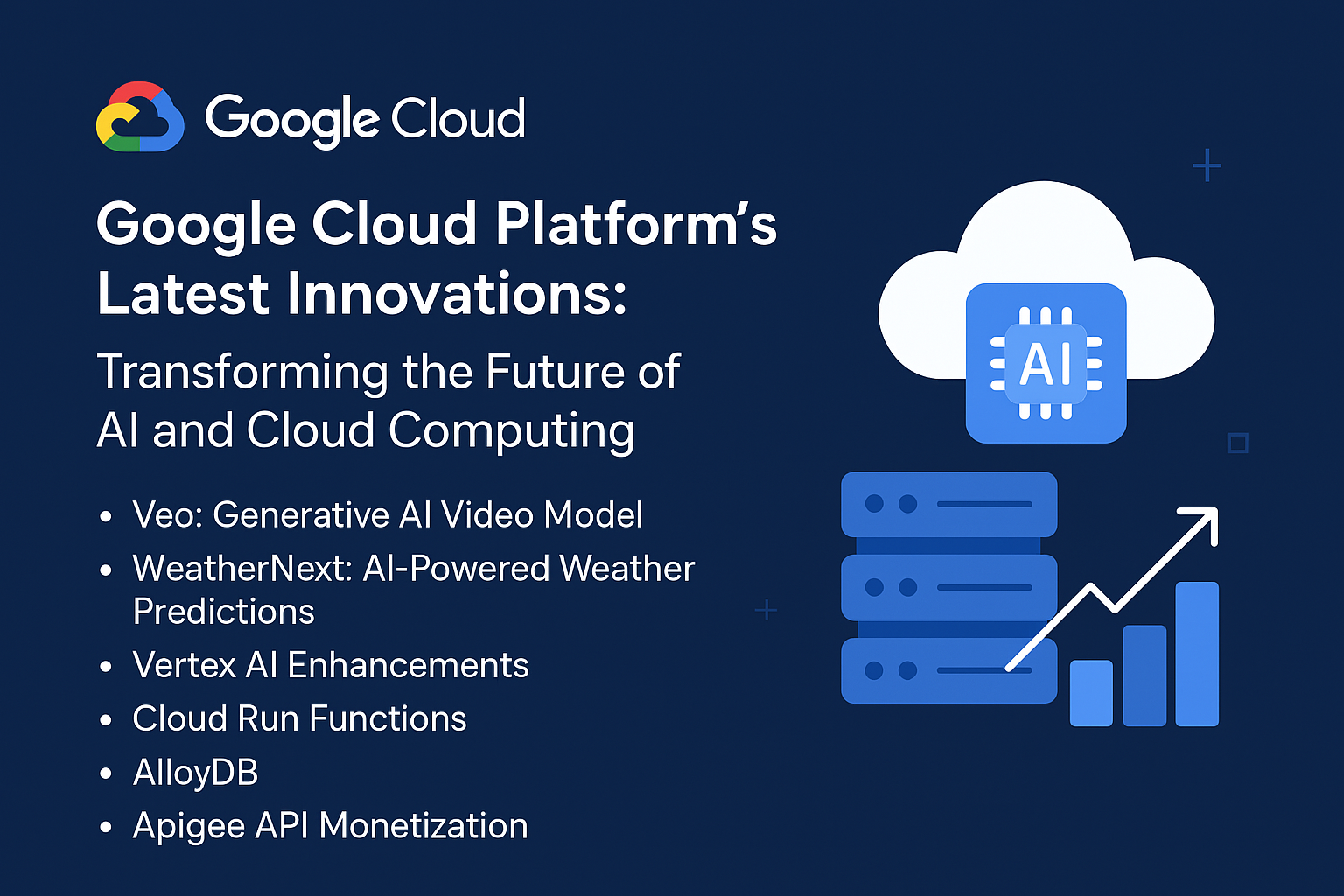In the rapidly evolving landscape of technology, cloud infrastructure remains at the forefront of innovation. As we approach 2024, several key trends are reshaping how organizations invest in and utilize cloud infrastructure. This article explores these emerging trends, offering insights into how they will influence the cloud industry and providing valuable resources for further reading.
1. Increased Investment in Multi-Cloud Strategies
As businesses continue to diversify their cloud environments, the adoption of multi-cloud strategies is on the rise. Companies are leveraging multiple cloud service providers to avoid vendor lock-in, enhance resilience, and optimize costs. According to Gartner, the multi-cloud market is expected to grow significantly, driven by the need for flexibility and redundancy.
Key Takeaways:
- Enhanced flexibility and reduced dependency on a single vendor.
- Improved disaster recovery and business continuity.
- Potential for cost savings through optimized cloud resource allocation.
For a comprehensive overview of multi-cloud strategies, this PDF from McKinsey provides detailed insights and case studies.
2. Growth of Edge Computing
Edge computing is becoming a crucial component of modern cloud infrastructure. By processing data closer to its source, edge computing reduces latency and bandwidth usage, enhancing the performance of applications and services. This trend is particularly significant for industries like IoT, autonomous vehicles, and real-time analytics.
Key Takeaways:
- Reduced latency and improved application performance.
- Efficient data processing for IoT and edge devices.
- Enhanced security through localized data handling.
For more information on edge computing trends, IBM’s whitepaper offers valuable insights into how edge computing is shaping the future of cloud infrastructure.
3. Rise of Cloud-Native Technologies
Cloud-native technologies, including Kubernetes, Docker, and serverless computing, are gaining traction as organizations seek to modernize their applications and infrastructure. These technologies facilitate rapid development, deployment, and scaling of applications, aligning with the growing demand for agility and innovation.
Key Takeaways:
- Accelerated development and deployment cycles.
- Improved scalability and resource efficiency.
- Enhanced support for microservices architectures.
For a deep dive into cloud-native technologies, refer to this comprehensive guide by Red Hat.
4. Expansion of Artificial Intelligence and Machine Learning Capabilities
Artificial Intelligence (AI) and Machine Learning (ML) are becoming integral to cloud infrastructure, providing advanced analytics, automation, and enhanced decision-making capabilities. Cloud providers are investing heavily in AI and ML to offer innovative solutions that can drive business growth and efficiency.
Key Takeaways:
- Enhanced data analytics and predictive capabilities.
- Automation of routine tasks and workflows.
- Development of intelligent applications and services.
Explore the potential of AI and ML in cloud infrastructure through Microsoft’s AI blog.
5. Focus on Cloud Security and Compliance
As cloud adoption grows, so does the emphasis on security and compliance. Organizations are increasingly investing in robust security measures and compliance frameworks to protect sensitive data and adhere to regulatory requirements. This trend is driven by the rising number of cyber threats and stringent data protection laws.
Key Takeaways:
- Implementation of advanced security protocols and tools.
- Adoption of compliance frameworks and standards.
- Increased focus on data privacy and protection.
For a detailed analysis of cloud security trends, check out this report by Cloud Security Alliance.
6. Adoption of Hybrid Cloud Models
Hybrid cloud environments, which combine private and public cloud resources, are becoming more popular as organizations seek a balance between control and flexibility. Hybrid models allow businesses to maintain sensitive data on private clouds while leveraging public clouds for scalability and cost efficiency.
Key Takeaways:
- Flexibility to choose the best environment for different workloads.
- Improved cost management and resource utilization.
- Enhanced control over sensitive data and applications.
For an in-depth look at hybrid cloud strategies, consult this PDF by IBM.
7. Emphasis on Sustainability and Green Computing
Sustainability is becoming a key consideration in cloud infrastructure investments. Cloud providers are adopting green computing practices to reduce their carbon footprint and support environmentally friendly initiatives. This trend aligns with the growing demand for corporate responsibility and sustainable practices.
Key Takeaways:
- Reduction of carbon emissions through energy-efficient data centers.
- Investment in renewable energy sources.
- Adoption of sustainable practices and technologies.
Learn more about green computing trends in Google’s sustainability report.
8. Development of Advanced Data Management Solutions
With the exponential growth of data, advanced data management solutions are crucial for efficient storage, retrieval, and analysis. Cloud providers are developing sophisticated tools and platforms to help organizations manage their data more effectively and derive actionable insights.
Key Takeaways:
- Enhanced data storage and retrieval capabilities.
- Advanced analytics and data processing tools.
- Improved data governance and management practices.
For more on data management in the cloud, AWS’s data management guide provides valuable resources and best practices.
9. Integration of Blockchain Technology
Blockchain technology is finding its way into cloud infrastructure, offering enhanced security, transparency, and traceability for transactions and data exchanges. This integration is particularly relevant for industries requiring secure and immutable records.
Key Takeaways:
- Enhanced security and transparency for transactions.
- Immutable records and audit trails.
- Support for decentralized applications and smart contracts.
Explore blockchain applications in cloud infrastructure with this resource by IBM.
10. Growth of Cloud-Based DevOps Practices
DevOps practices are increasingly being integrated into cloud environments to streamline development and operations. Cloud-based DevOps tools and platforms enable continuous integration, delivery, and deployment, fostering greater collaboration and efficiency.
Key Takeaways:
- Improved collaboration between development and operations teams.
- Accelerated software development and deployment cycles.
- Enhanced automation and monitoring capabilities.
For insights into cloud-based DevOps practices, this PDF by Atlassian offers practical guidance and strategies.
11. Emergence of Quantum Computing
Quantum computing is on the horizon, with significant implications for cloud infrastructure. While still in its nascent stages, quantum computing promises to revolutionize data processing and problem-solving capabilities. Cloud providers are exploring ways to integrate quantum computing with traditional cloud services.
Key Takeaways:
- Potential for solving complex problems beyond classical computing.
- Exploration of quantum algorithms and applications.
- Early-stage integration with existing cloud services.
Stay updated on quantum computing advancements with this report by IBM.
As we look toward 2024, these emerging trends in cloud infrastructure investment will shape the future of technology and business operations. By staying informed and adapting to these developments, organizations can position themselves for success in an increasingly complex and dynamic digital landscape.
For further reading and detailed resources on these trends, explore the provided links and PDFs. Embracing these innovations will be key to leveraging the full potential of cloud infrastructure and achieving strategic goals in the coming year.
References
- Gartner’s Cloud Market Forecast
- McKinsey Cloud Strategies
- IBM’s Edge Computing Whitepaper
- Red Hat’s Cloud-Native Applications Guide
- Microsoft AI Blog
- Cloud Security Alliance Report
- IBM Hybrid Cloud PDF
- Google’s Sustainability Report
- AWS Data Management Guide
- IBM Blockchain Resource
- Atlassian DevOps Guide
- IBM Quantum Computing Report
By staying abreast of these trends and incorporating them into your cloud strategies, you can enhance your organization’s agility, security, and efficiency.

